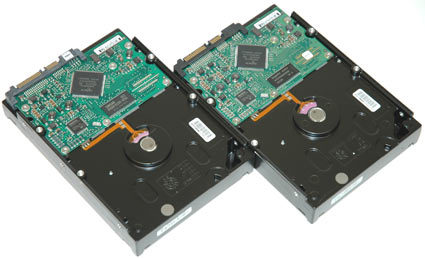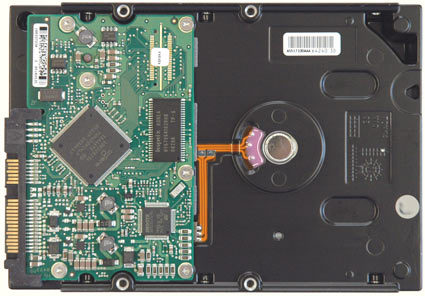New, Faster, Quieter: The Seagate Barracuda 7200.8
Seagate Barracuda 7200.8
One thing we want to mention right away is Seagate's generous five-year manufacturer warranty. This is a notable exception to what the competition is doing, with three years currently being standard for high-quality ATA hard drives. This should be enough in most cases, considering that a 300 GB drive is going to seem pretty puny in three years' time. But remember that only 18 months ago, numerous drive manufacturers cut their warranty periods for low-cost models down to a mere 12 months.
Unfortunately, Seagate doesn't seem to have the same amount of confidence in its external drive series - they only offer a one-year warranty for those units, despite the fact that no other drives come in such a nifty-looking plastic housing. In Europe, dealers have to provide the mandatory two years of warranty prescribed by law.
The Barracuda 7200.8 illustrates Seagate's systematic efforts at further developing its product. What started out as the noisy, hot-running 10 GB Barracuda ATA has evolved into the amazingly quiet and relatively cool-mannered drive we see today. Seagate also offers acoustic management, but using it is rarely a good idea for nearly any application, as access times suffer without a major reduction in the noise level.
Seagate again managed to increase the performance in its latest generation of drives. The 400 GB model provides a maximum transfer rate of nearly 70 MB/s reading. That makes the ST3400832AS the fastest ATA hard drive out there today running at 7,200 RPM. Western Digital's 74 GB Raptor remains faster with its 10,000 RPM spindle speed.
With respect to access times, it came as a bit of a surprise that contrary to the optimistic search time specifications, the two 7200.8 drives failed to achieve top marks. The 400 GB model registered 16.5 ms, while its 300 GB little brother obtained an average access time of 15 ms. By comparison, the Hitachi 7K400 registers only 12.5 ms, but it does this using five instead of three disks and without command queuing. One may well suspect that this new innovation could have an impact on access times when not in use. The Winbench result likewise reflected the same outcome. A separate article will be dedicated to investigating this question.
The 133 GB of storage for each platter gives Seagate the record for areal density. Since the market demands "even" capacities, however, these are not fully utilized with some models, such as the 300 GB version. That also explains why the data transfer rate turns out slightly lower on the one hand, while the access time comes out a hair better.
Get Tom's Hardware's best news and in-depth reviews, straight to your inbox.
Current page: Seagate Barracuda 7200.8
Prev Page Seagate's New Hard Drives Next Page Seagate External Hard Drive 400 GB
Patrick Schmid was the editor-in-chief for Tom's Hardware from 2005 to 2006. He wrote numerous articles on a wide range of hardware topics, including storage, CPUs, and system builds.



